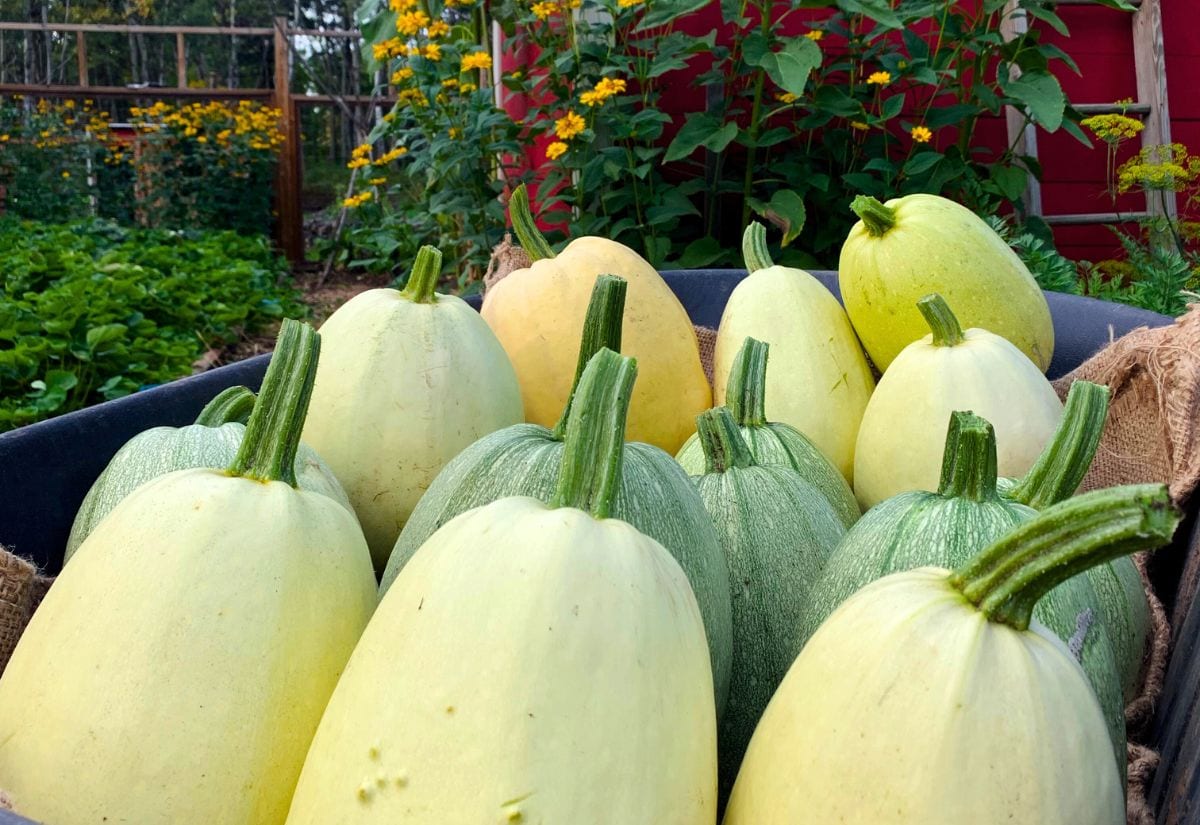
Spaghetti squash or vegetable spaghetti is a type of winter squash that takes at least 3 months to mature. When fully ripe, the fruit has a sweet, mildly nutty taste, with flesh that comes apart in spaghetti-like strands after it’s cooked. Pick your spaghetti squash too soon, and it will have a bland taste and starchy texture. But if you leave it on the vine too long, it will simply start rotting.
So how can you tell if your spaghetti squash is ready to pick?
A ripe spaghetti squash has a dull, thick rind, that’s hard enough to prevent you from leaving a dent in it with your fingernail. The stem should be brown and dry, and the fruit should make a dull sound when you tap it. Usually, spaghetti squash ripens to a rich, golden color. But, depending on the cultivar you’re growing, color may not always be the best way to tell that the fruit is ripe.
This guide will teach you the best ways to tell if a spaghetti squash is ripe and how to harvest it when it’s ready. It will also teach you how to cure and store this tasty autumn fruit, how to ripen it off the vine, and how to tell if it’s no longer good enough to eat.
How Long Does Spaghetti Squash Take To Grow?
On average, most spaghetti squash varieties take around 100 days to mature. When provided with enough sun, warm temperatures, and plenty of water and fertilizers, squash plants will start bearing fruit about 2 months after planting. Once the female flower is pollinated and the fruit sets, it takes another 40 to 60 days before it ripens.
Depending on where you live and how early in the growing season you’ve planted your spaghetti squash, you can start harvesting ripe fruit by late summer. In most cases, though, spaghetti squash is ready to pick starting late September until the first fall frost.
4 Ways To Tell When Spaghetti Squash Is Ripe And Ready to Pick
There are 4 ways to tell if your spaghetti squash is ripe. For best results, use all of them before deciding whether your squash is ready to be picked. Let’s take a look.
1. Rind Is Dull and Hard
Fully ripe spaghetti squash has a thick, hard rind with a dull, matte look. If the rind is shiny, like the rind on a zucchini, it means the squash still needs more time to ripen. Similarly, if the rind feels a bit soft to the touch, it could mean that your squash is unripe.
The most reliable way to test for squash ripeness is using what gardeners call “the fingernail test”. Simply press your fingernail into the rind of the squash.
If your nail leaves a mark, the squash is not yet ready. But if you’re not able to leave a dent, that’s a sign that your spaghetti squash is ready to pick.
2. Squash Sounds Hollow When You Tap It
This method takes a bit of practice until you get used to what a hollow spaghetti squash sounds like. Start tapping or gently knocking on the rind of your squash as it develops. After a few weeks, you will notice a change in the sound it makes. When the spaghetti squash sounds hollow, you’ll know it’s ripe enough to harvest.
3. Stem and Vines Are Starting To Dry
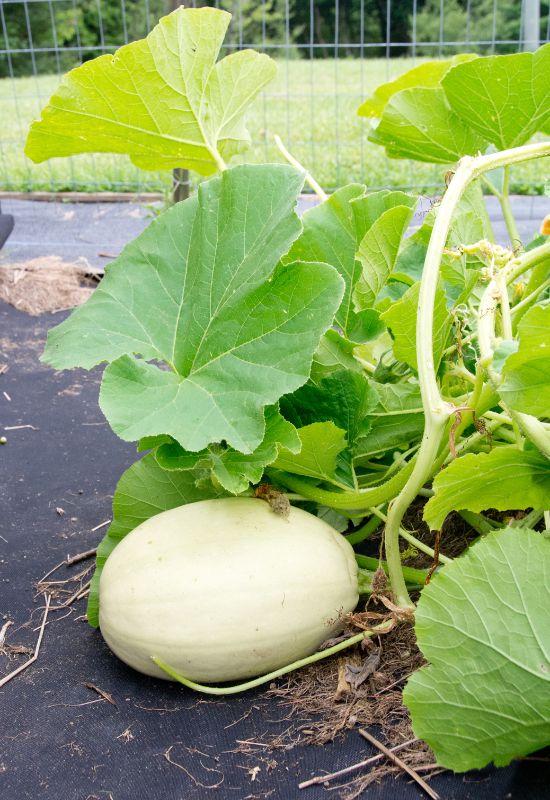
As your spaghetti squash ripens, the stem will gradually dry out and harden. If the stem is still green, it’s still too early to pick your squash. Once it’s starting to turn brown, remember to also use the fingernail test, and if you can’t leave a dent in the rind, that means your squash is done.
In early to mid fall, the spaghetti squash vines will also start to wilt and dry out. When the entire plant is completely dry, that’s usually a sign that your remaining squashes are ready to be picked, then cured and stored for later.
4. Rind Is a Deep Yellow or Golden Color
When ripe, the rind of most spaghetti squash varieties will turn from pale green or cream to a rich, golden color. Make sure that the rind is fully golden before picking. If your spaghetti squash is laying on the ground, pick it up and inspect it on all sides, especially at the bottom. If it still has pale yellow, green, or even white spots, leave it on the vine a bit longer.
Remember To Check the Information on the Seed Packet
Always keep the seed packet after planting your squash. The label will provide valuable information about when and how to plant it, but also how long the spaghetti squash takes to mature. Most importantly, it will show you what color the ripe fruit should be, and how big it will get when ripe.
How to Harvest Spaghetti Squash
Use a pair of sharp, sterilized gardening scissors to harvest your spaghetti squash. Keeping the stem intact is the first step in making sure that your squash lasts longer in storage. If you pull it off the vine by hand, you risk damaging the stem, and even breaking the vines of the main plant.
Start by sanitizing your gardening scissors or pruning shears by rubbing them with a bit of medicinal alcohol. Then, make a neat, clean cut to remove the squash from the vine. Leave a piece of stalk at least 2 inches long (5 cm) attached to the fruit. This will protect your squash from rotting and ensures longer storage.
Always harvest spaghetti squash that has an intact, unblemished rind. A few small cuts or scratches are fine, as long as they’re not too deep. But if the rind is badly damaged, it will create an opening for fungi and bacteria, and your squash will spoil.
After harvesting, wipe the rind with a dry cloth or a soft brush, to remove any soil or debris. If the squash is very dirty, you can clean it with a damp cloth, but remember to dry it afterward. Squash fruit is susceptible to mold if the rind is wet, or if it’s stored in moist conditions. Also, if your squash gets wet before you harvest it, always make sure the rind is fully dry before you store it.
Harvest your spaghetti squash regularly, to protect it from being eaten by pests or rotting on the vine. Regular picking also encourages the plant to spend its energy on producing more flowers and more fruit. If you still have squash fruit on the vine by the time the first frost hits, harvest all of them immediately, and cure or ripen them indoors.
How to Cure and Store Spaghetti Squash
All winter squash varieties need to be cured to prolong their time in storage — and this includes the spaghetti squash. This process helps heal any scratches or cuts on the rind, helps the cut stem to callus, and allows the skin to harden further.
To cure spaghetti squash, keep it in a warm, well-ventilated room, with temperatures around 25°C – 27°C (77°F to 80°F). If the weather allows it, you can even leave the squash outside to cure. Your squash should be cured after 10 to 14 days.
Keep in mind that spaghetti squash with badly damaged rind will not store well, and may even start to rot while you’re curing it. In such cases, it’s best to just cut the damaged sections and either eat the squash the same day, or keep it in the fridge for 3 to 4 days.
Store your spaghetti squash in a garage, cellar, pantry, or a well-ventilated room where temperatures stay between 10°C and 13°C (50°F to 55°F). For best results, hang your squash using a net or mesh bag. Alternatively, you can keep it on a high shelf.
Avoid storing spaghetti squash directly on the floor, especially if it’s likely to get cold and damp. When storing several squashes together, leave enough room between them to facilitate airflow, and avoid piling them on top of each other.
If you notice any that have spoiled, remove them immediately. Also, avoid storing squashes with apples, pears, or bananas. These fruits produce ethylene gas as they ripen, and will cause your spaghetti squash to spoil faster.
When stored correctly, spaghetti squash can last for up to 3 months. You can extend its shelf life by blanching or cooking, then freezing it.
FAQ
Are All Spaghetti Squash Varieties Yellow When Ripe?
Although most spaghetti squash cultivars are deep yellow or golden in color, some can be orange, yellow-green, and even striped. Here’s a quick color guide for the most popular cultivars and hybrids:
Can You Eat Spaghetti Squash Before It’s Ripe?
Technically speaking, yes. You can eat green spaghetti squash if you cook it properly. However, unripe squash is a bit bland and starchy, with a taste and texture that resemble zucchini. It’s always best to let squash ripen before you eat it so that the starches have time to convert into sugars.
Will Spaghetti Squash Ripen After You Pick It?
Spaghetti squash ripens best when it’s left on the vine. But if you experience a sudden frost, it’s best to harvest all unripe squash from the garden. In most cases, the squash should be just about ready, and a couple of weeks in a warm, sunny, and well-ventilated place will help it ripen off the vine. Remember to turn it regularly, so that all its sides are exposed to the sun.
However, if the rind is too soft and mostly green, the spaghetti squash won’t fully ripen after picking.
What Happens if You Leave Spaghetti Squash on the Vine Too Long?
Leaving spaghetti squash on the vine for too long will cause it to spoil. The smell of ripe squash will attract pests and even wildlife, such as foxes, squirrels, and badgers. Any damage to the rind will become an entry point for fungi and bacteria, and your squash will start to rot.
How Can You Tell if Spaghetti Squash Is Not Good To Eat?
You can tell if spaghetti squash is bad inside based on the smell, texture, color, and taste. Spoiled squash has a strong, pungent smell, bitter taste, and a soft rind, often with brown or white, moldy spots. Check the stem, and if the rind around it is soft and smells bad, that’s a sign that the squash has gone bad. Even if the rind is unblemished, if you cut into the squash and you notice it has a mushy texture and unpleasant smell, throw it away.
Harvesting and Preserving Joy
Like butternut squash, pumpkin, and other winter squash varieties, spaghetti squash should always be picked when fully ripe in order to make the most of its delicious flavor.
As a (literal) rule of thumb, if you can’t scratch the rind with your fingernail, that means your squash is ready for harvesting. Remember to cure it for at least 7 to 10 days, then you can either freeze it, or store it in a cool, dry, and well-ventilated place.

Written By
Amber Noyes
Amber Noyes was born and raised in a suburban California town, San Mateo. She holds a master’s degree in horticulture from the University of California as well as a BS in Biology from the University of San Francisco. With experience working on an organic farm, water conservation research, farmers’ markets, and plant nursery, she understands what makes plants thrive and how we can better understand the connection between microclimate and plant health. When she’s not on the land, Amber loves informing people of new ideas/things related to gardening, especially organic gardening, houseplants, and growing plants in a small space.

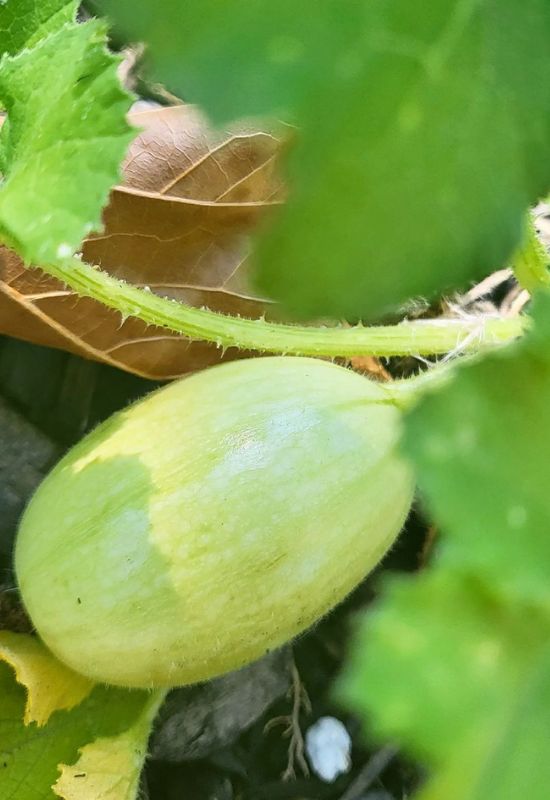
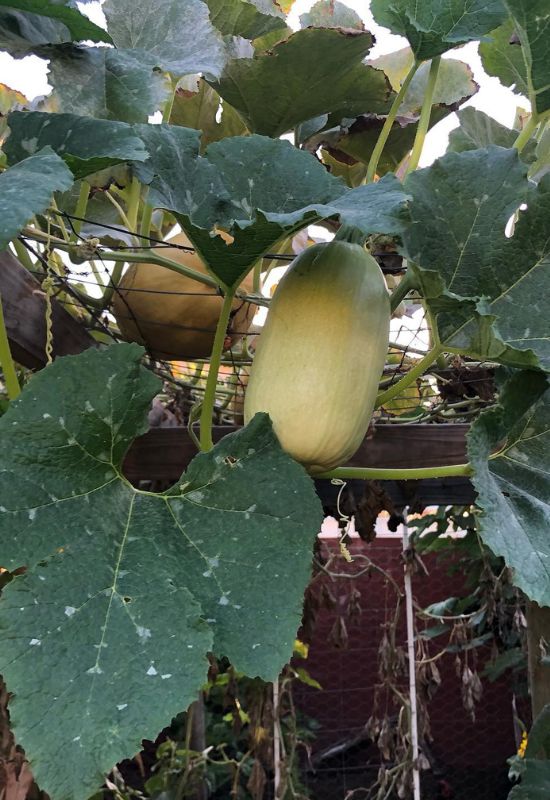
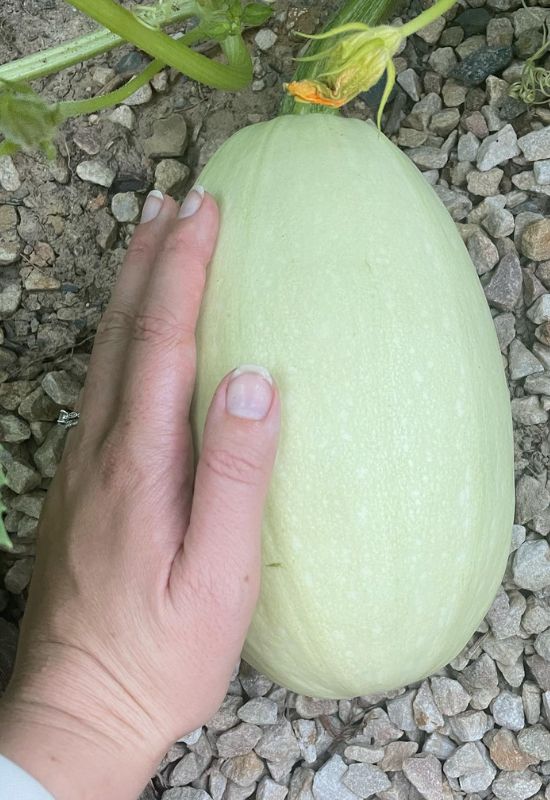
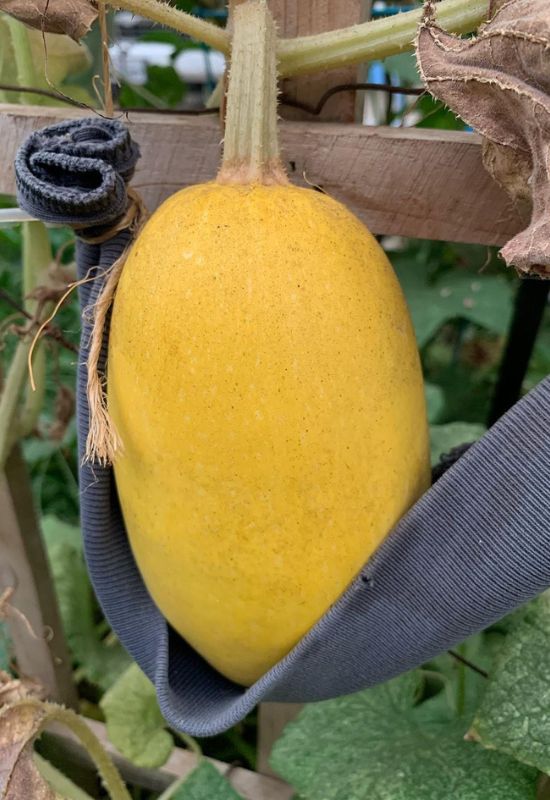
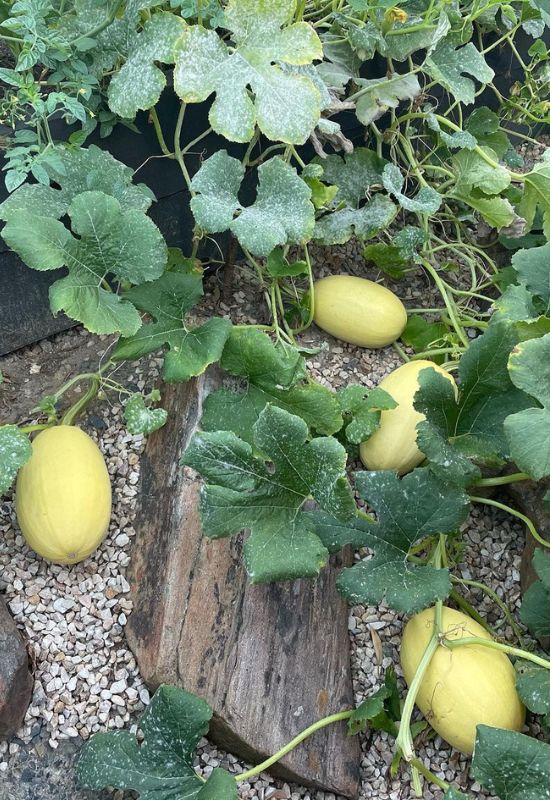
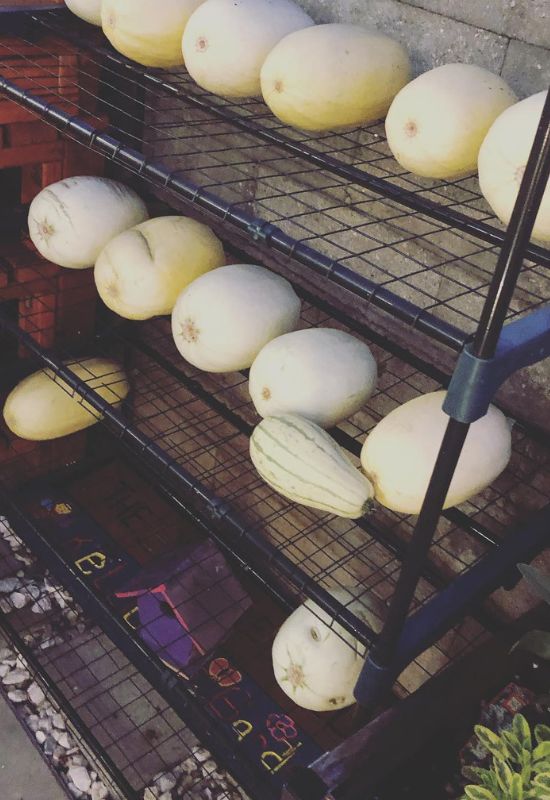
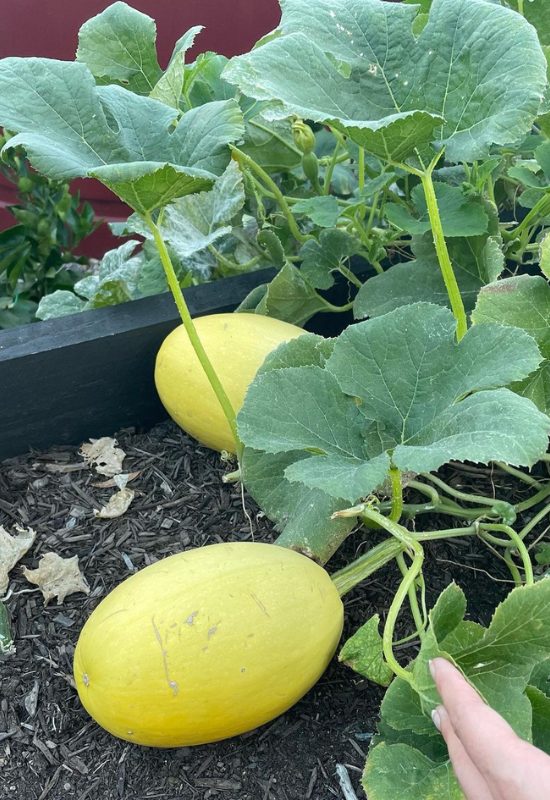
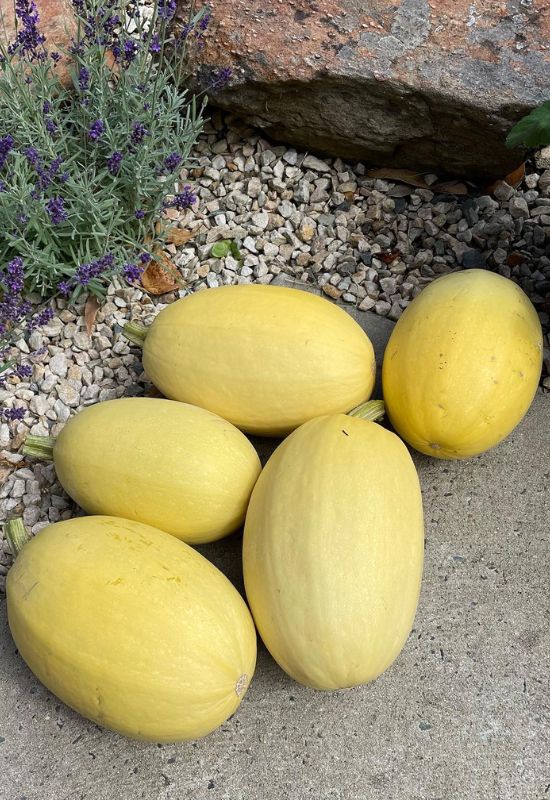
Great article! Really thorough, well-written, and the pictures enhance the text. You answered every single question I had about the unknown squash growing in my organic garden! Thanks.